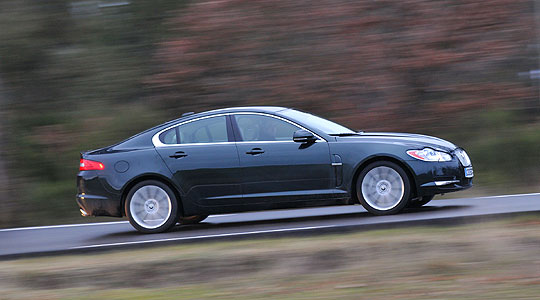
Jaguar has given the worldwide car-buying public a big problem. What else could you possibly need apart from the latest 275PS diesel XF?
It's a stunningly good car that is indecently fast (155mph, 0-62mph in 5.9 seconds) – yet sips refined spirit at a rate worthy of the local Temperance Society. Try as I might, I just couldn't run the fuel tank down; instead of limping to the nearest garage, Jaguar’s collection driver could have travelled another 250-or-so miles on the remains of the tank. The one tank I used all week.
The secret of the car is under the bonnet (and a little bit further back, as the six-speed ZF 6HP28 automatic transmission is an important part of the set-up). The Jaguar engineers took an already very good, twin-turbo 2.7-litre diesel V6 and, by increasing its capacity to 3.0 litres, made it into a genuine alternative to a big (let’s admit it, ‘German’) petrol V8, let alone other ‘performance’ diesels.
Jaguar, of course, makes fine petrol V8s and has been impressing testers with its range-topping 510PS XFR. But the diesel is the one that will find volume sales in Europe and the briefest of test drives in this – or the 240PS version – must make spending another £20,000 on the supercharged car a rare indulgence.
The latter comment is not entirely fair, as our test XF was the top ‘Portfolio’ model and was, in truth, nearer £15,000 under the XFR – but it did have enough extras to keep a medium-sized bell and whistle factory flat out, even in today’s straitened times. The ‘S’ model has a discreet spoiler on its boot, and an ‘S’ just below that – together with an additional £3000 on the final invoice.
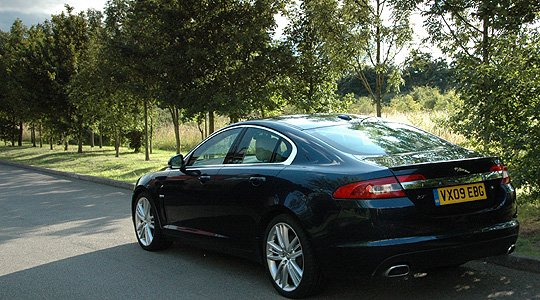
I’ve got rather used to keyless entry systems, and all but the ‘Luxury’ (base model) XFs have the Jaguar Smart Key System. So you sidle up to the car, key in pocket, and simply open the previously locked door, buckle-up and press the Start button. The car does its party-piece swivelling of air vents and elevation of the JaguarDrive Selector (gear knob to you and me) and, electronic handbrake released, you’re off.
On idle, the engine has the faintest of murmurs, but drivers of agricultural diesels of just a few years ago, such as the Mercedes 270 5-cylinder, will not recognise this as an oil-burner. Just a hint of accelerator removes any remaining diesel chatter and the car behaves as though it were a quality, big-capacity, multi-cylinder petrol model.
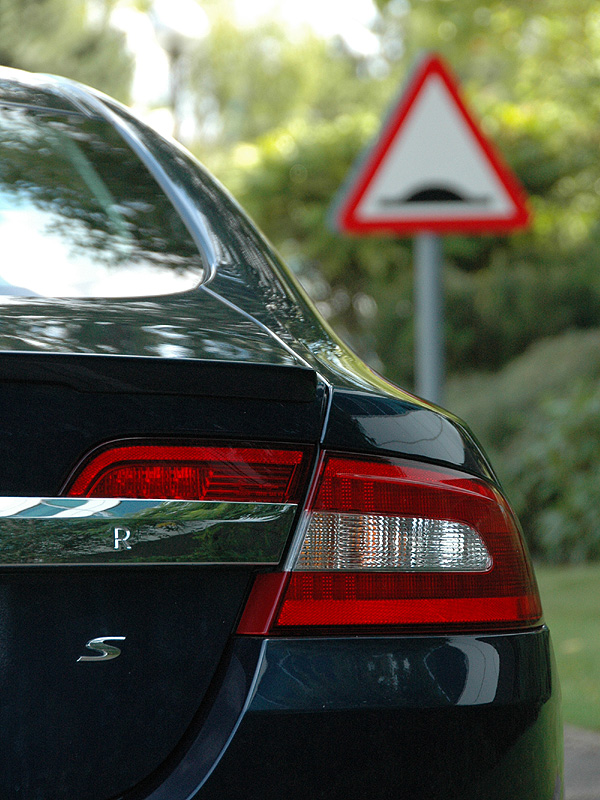
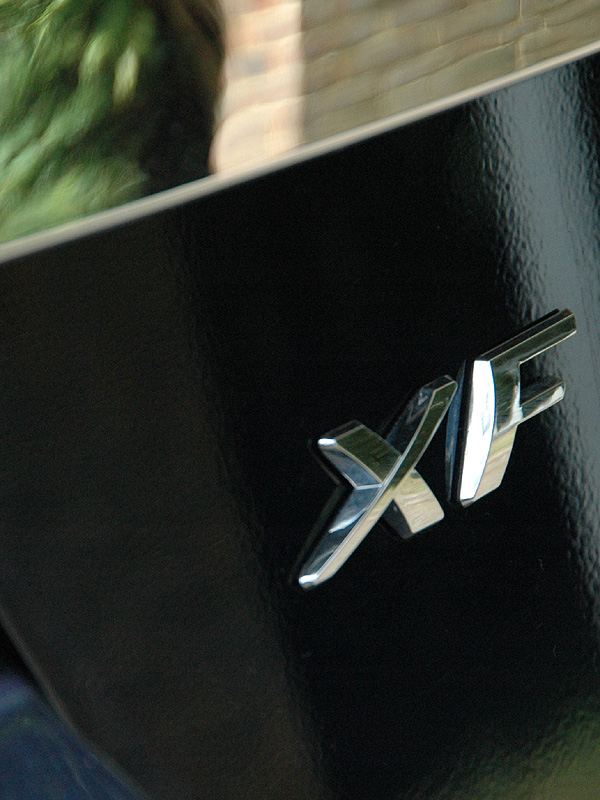
By using one big, variable-geometry primary turbocharger for most of the engine’s work, the new power unit achieves class-leading economy and a colossal 600Nm of torque at just 2000rpm. A smaller, fixed-geometry, secondary turbo only comes in above 2800rpm and provides extra power at higher revs. This lost me somewhat but, as it’s the reverse of what many other manufacturers do (and it clearly works), it’s obviously the secret to the latest engine’s phenomenal punch.
The superb, seamless 6-speed auto is brilliantly mapped to match the mighty commonrail motor. Its almost-DSG-like changes suit the power delivery well – you can fiddle about with sportier settings but, really, just leave it in drive and enjoy the ride. The paddles behind the wheel are a little plasticky – but do the job. Something to improve on there, Jaguar.
It is a seriously quick car; in the manner of a Bentley Flying Spur, rather than AMG Mercedes. Switch in and out of third and fourth gear and you can really cover some ground, making overtaking a pleasure, while sixth provides effortless – and astoundingly economical – cruising.
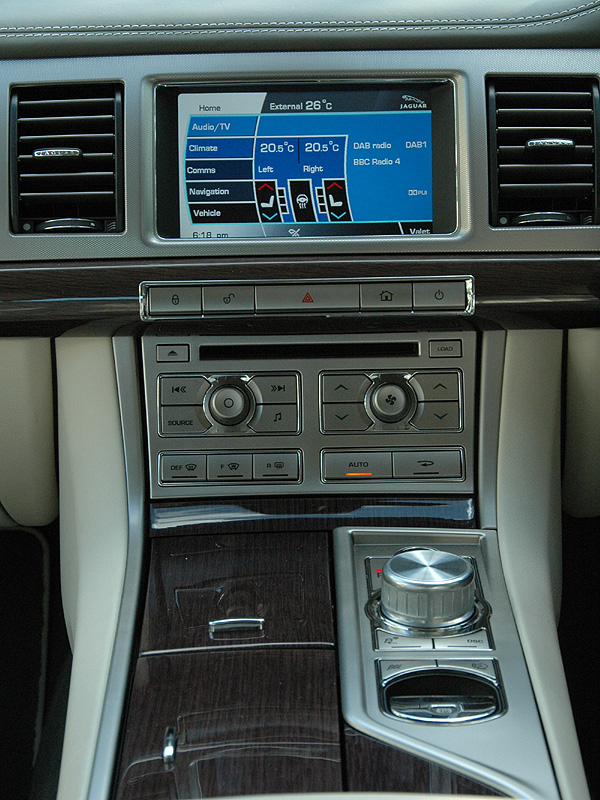
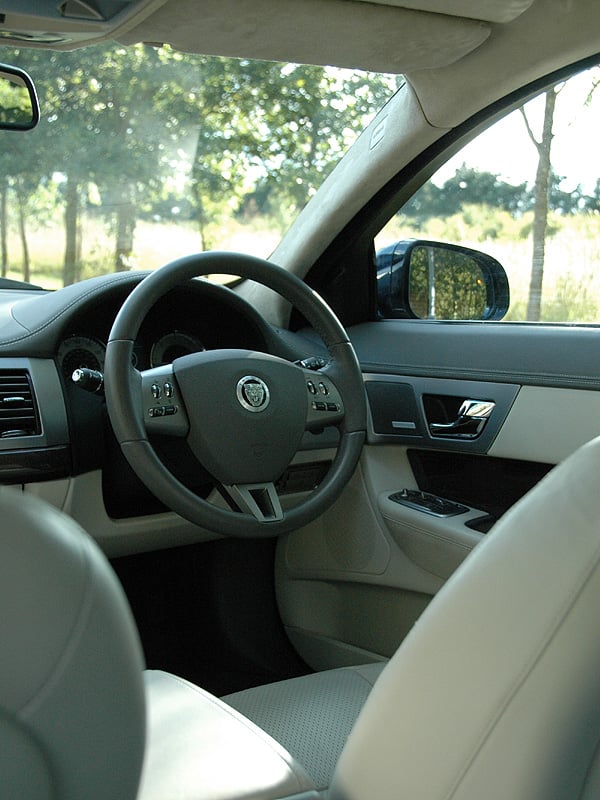
The ride and handling are pure Jaguar: a light ‘floatiness’ that is, in effect, superbly developed, pothole-riding driving behaviour of the highest order. The ground-pummelling characteristics of an equivalent Audi/BMW/Mercedes saloon are light-years away from the latest XF. 20-inch Selena alloy wheels a little bumpy? Hmm… maybe – but not too intrusive.
Inside our lavishly specified car we have ‘Luxurious Suedecloth premium headlining’ (Alcantara in all but name…), perforated, actively ventilated, heated and cooled front seats with a host of electric adjustments, and many more gadgets and gizmos. The standard-for-Portfolio DAB radio worked well (I was genuinely impressed) and the radar-governed cruise control (with automatic speed limiter) an essential tool on 21st Century Britain's motorways.
Okay, so it’s not as roomy in the back as an E-Class. And the front seats are comfortable but could do with a little more support – particularly given the car’s performance. From a styling point of view, I’m pretty happy with it but feel that the over-chromed grille lets it down.
So there you have it: a brilliant four-seater with an exclusive badge that’s as fast to 62mph as a Porsche Boxster and emits less CO2 (just 179g/km – incredible, I simply cannot believe it…) than a 1.8-litre VW Passat.
Resting my trowel of plaudits for just a second, I ponder: “Would I buy one?”
No. And the reason being, Mr Contrary? First of all, I’m not really a 'mid-size executive' sort of person and, secondly, you’ve got to leave yourself wanting more.
The Jaguar XF Diesel S is nigh-on perfect – and for any self-respecting car fan, that would just never do.
The car tested was a Jaguar XF 3.0L Diesel S Portfolio in Indigo Blue with Oyster/Ivory interior trim and Rich Oak Veneer. It carries a basic ‘on the road’ recommended retail price in the UK of £44,200. Extras fitted were:
Parking Aid Pack with rear camera £386.60; heated steering wheel £230; digital/analogue television £685.10; ACC with Advanced Emergency Brake Assist £973.83; Blind Spot Monitor £440.43; JaguarVoice £430.64; Rich Oak Veneer £146.81.
Text: Steve Wakefield
Photos: Classic Driver / Jaguar
ClassicInside - The Classic Driver Newsletter
Free Subscription!






